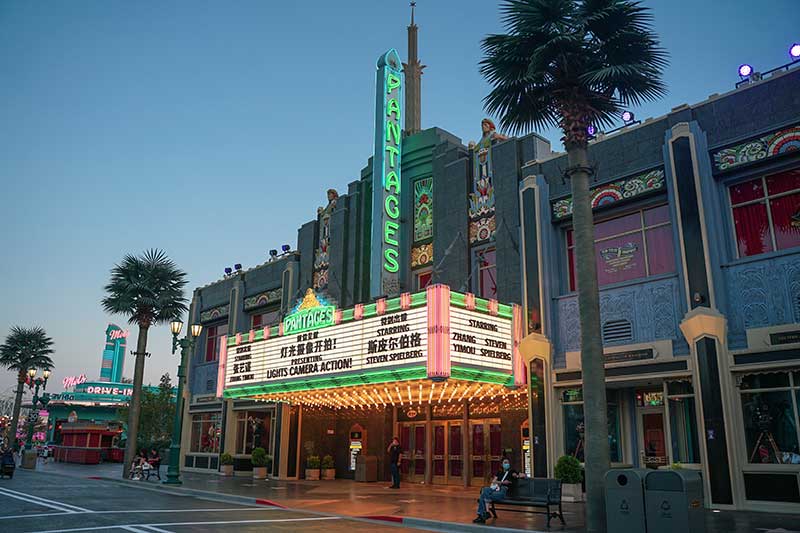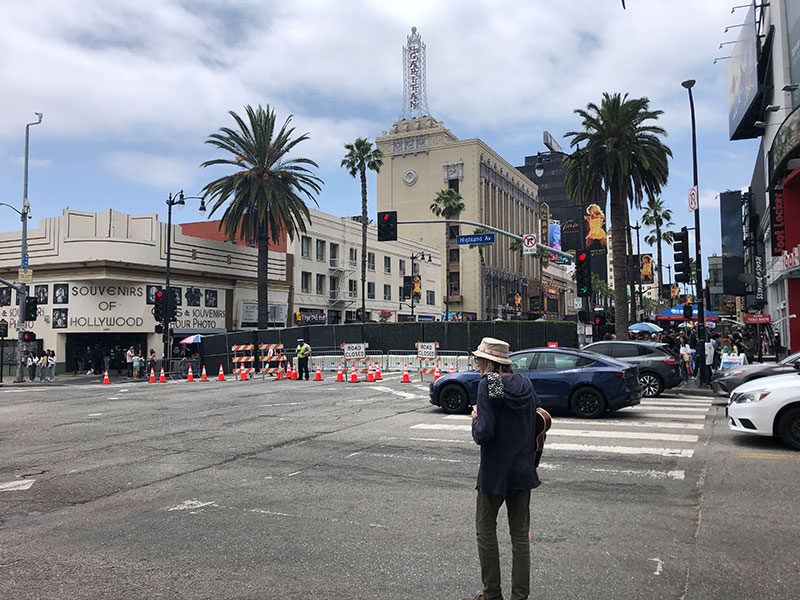Taking The Bus to Your Hollywood Bus Tour
Hollywood, California, for decades known as the epicenter of the global entertainment industry, is a vibrant and bustling neighborhood within the confines of the city of Los Angeles. Famous for its ubiquitous tours of Hollywood, iconic Walk of Fame, historic silent-era theaters, and of course everyone’s favorite, the Hollywood Sign, this tourist-friendly attracts millions of visitors each year many of whom opt to take a bus tour of celebrity homes. However, the high population density and traffic congestion in the area make public transportation a crucial component of the city’s infrastructure. In this essay, we will explore the extensive public transportation options available in Hollywood, emphasizing their significance in reducing traffic congestion, promoting sustainability, and facilitating seamless mobility for residents and tourists alike.
- Metro Rail
One of the most prominent public transportation options in Hollywood is the Metro Rail system, operated by the Los Angeles County Metropolitan Transportation Authority (Metro). The Metro Rail consists of multiple lines, with two of them serving Hollywood: the Red Line and the Purple Line.
The Red Line, also known as the “Hollywood/Highland” station, provides direct access to some of the most famous landmarks in the area, including the Hollywood Walk of Fame, TCL Chinese Theatre, and the Dolby Theatre (home to the Academy Awards). The Red Line connects Hollywood to Downtown Los Angeles, North Hollywood, and Universal City, making it a popular choice for both residents and tourists.
The Purple Line extension, currently under construction, aims to further enhance public transportation connectivity in Hollywood. Once completed, it will provide an underground link from Downtown Los Angeles through Koreatown, Miracle Mile, and Beverly Hills, eventually reaching Westwood. This expansion will offer even more convenient options for travelers and commuters within Hollywood and beyond.
- Bus Services
In addition to the Metro Rail system, Hollywood boasts an extensive network of bus services that crisscross the neighborhood and connect it to other parts of Los Angeles. The Metro bus system, which includes local, Rapid, and Express routes, offers a flexible and affordable way to navigate Hollywood and its surrounding areas.
Local buses like Metro Lines 2 and 4 provide essential transit within Hollywood, serving neighborhoods such as Hollywood Hills, East Hollywood, and West Hollywood. They are a lifeline for residents, making it easier to access schools, businesses, and amenities without relying on personal vehicles.
Rapid buses, such as Metro Line 704, provide a quicker way to traverse the city. They make fewer stops, making them ideal for those who need to reach their destinations promptly. The 704 Rapid bus, for example, connects Hollywood to Downtown Los Angeles and Santa Monica, offering a convenient link to the beach.
Express buses like Metro Line 501 offer a direct connection from Hollywood to other parts of Los Angeles County. These buses are particularly beneficial for commuters traveling longer distances, as they minimize travel time by bypassing many local stops.

Metro bus tour in Hollywood, CA
- Metro Bike Share
To further encourage sustainable transportation, Hollywood offers a Metro Bike Share program. This initiative allows residents and visitors to rent bicycles conveniently and explore the neighborhood at their own pace. Bike-sharing stations are strategically placed throughout Hollywood, making it easy to access this eco-friendly mode of transportation.
With bike lanes and dedicated paths, Hollywood is becoming increasingly bike-friendly, enabling riders to reach their destinations quickly and enjoy scenic routes while reducing their carbon footprint.
- Ride-Sharing Services
While public transportation options are prevalent in Hollywood, ride-sharing services like Uber and Lyft also play a significant role in the area’s transportation ecosystem. These services provide a convenient and flexible means of getting around, especially for those traveling to locations not directly serviced by public transit.
Ride-sharing complements public transportation by offering the first-mile and last-mile connectivity. Passengers can use ride-sharing services to reach Metro stations or bus stops efficiently, bridging the gap between their homes or hotels and public transit hubs.
- Accessibility for All
Public transportation in Hollywood is designed to be inclusive and accessible to people of all abilities. Metro buses and trains are equipped with features such as ramps, wheelchair spaces, and priority seating to accommodate passengers with mobility challenges. Additionally, audio and visual announcements make it easier for individuals with visual or hearing impairments to navigate the system.
Hollywood’s commitment to accessibility extends beyond vehicles. Sidewalks, bus stops, and transit stations are designed to be wheelchair-friendly, ensuring that everyone can comfortably use public transportation.
- Environmental Benefits
One of the most significant advantages of public transportation in Hollywood is its positive impact on the environment. Los Angeles, like many major cities, faces challenges related to air quality and greenhouse gas emissions. Public transit reduces the number of cars on the road, leading to decreased congestion and lower emissions.
The expansion of Metro Rail lines and the promotion of bike-sharing programs are part of the city’s efforts to encourage sustainable transportation choices. By choosing public transit or biking, individuals can contribute to reducing the city’s carbon footprint and improving air quality.
- Economic Benefits
Public transportation also offers economic benefits to Hollywood and its residents. By providing reliable transit options, the city supports the workforce and enables people to access employment opportunities throughout the region.
The presence of efficient public transportation can also increase property values and stimulate economic development. Businesses near transit stations often experience higher foot traffic, leading to increased revenue. Additionally, well-connected neighborhoods tend to attract investors, developers, and new residents, further boosting the local economy.
- Reducing Traffic Congestion
Hollywood is notorious for its traffic congestion, particularly along major thoroughfares like Hollywood Boulevard and Sunset Boulevard. Public transportation serves as a viable solution to this issue. By enticing people to leave their cars at home and use buses or trains instead, public transit alleviates congestion, reduces travel times, and eases the stress associated with navigating through heavy traffic.
The Metro Rail lines, in particular, have been instrumental in reducing traffic in Hollywood. Commuters who previously relied on their cars have found a more efficient and time-saving alternative in the Metro Red Line, which connects Hollywood to downtown Los Angeles in about 15 minutes during peak hours.
- Entertainment and Tourism
Hollywood is a global hub for entertainment, attracting millions of tourists each year. Public transportation plays a vital role in catering to the needs of these visitors. Tourists staying in Hollywood hotels often rely on public transit to explore the city’s attractions, from the Hollywood Sign and Griffith Observatory to Universal Studios and the Hollywood Bowl.
By offering convenient and affordable transportation options, Hollywood ensures that tourists can experience the glamour and excitement of the entertainment capital without the stress of driving in unfamiliar surroundings. This accessibility enhances the overall tourism experience and contributes to the economic prosperity of the district.
- Future Developments and Challenges
While Hollywood’s public transportation system has made significant strides in recent years, challenges remain. The expansion of the Purple Line and continued improvements to bus services are essential steps toward enhancing connectivity. However, funding and infrastructure development are ongoing concerns.
Another challenge is the need to balance the growth of public transportation with the preservation of the neighborhood’s unique character and historic landmarks. Hollywood’s iconic theaters and landmarks must be protected while accommodating new transit infrastructure.
In conclusion, public transportation in Hollywood, CA, plays a vital role in connecting the entertainment capital to the rest of Los Angeles County. With the Metro Rail system, extensive bus services, bike-sharing programs, and ride-sharing options, residents and visitors have a wide range of choices for getting around the neighborhood. Hollywood’s commitment to accessibility, sustainability, and economic development ensures that public transportation will continue to be a driving force in reducing traffic congestion, promoting environmental stewardship, and facilitating seamless mobility in this iconic district.








